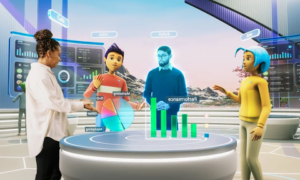When a business owner is considering setting up in Dubai, it is helpful to find an expert who specializes in a business setup. These experts can help you through all steps of the investor and employment visa documentation. These documents are crucial for a successful business setup in Dubai. In addition, these experts can help you with the incorporation process, which is a critical step for establishing your business.
Business Setup Consultants
Business setup consultants in Dubai help budding entrepreneurs set up their businesses and reap the benefits of UAE’s 0 percent tax policy. This tax policy is applicable in the entire United Arab Emirates, making it a very attractive destination for many entrepreneurs. However, setting up a business can be a difficult task without the assistance of experts who have expertise in this field.
Apart from business setup, these consultants also offer a wide range of other services, such as HR outsourcing, Payroll outsourcing service, Trademark Services, and office space. They help companies set up their business in the UAE, as well as in other countries. They have a track record of 30 years in this field and have helped more than 10000 start-ups.
Business setup consultants in UAE offer excellent services at affordable rates, which can fit any budget. This is a major advantage for entrepreneurs who are on a budget.
Business Setup in Dubai
There are several factors to consider before you begin the process of setting up a business in Dubai. For example, you will want to be sure that you have a unique company name. Choosing a unique name is an important step in establishing your brand and creating awareness of your new venture. You will also want to register your new company name with the economic development department. They reserve the right to reject names with similar meanings or require you to change your company name to something else. In addition, you will want to register your company with the relevant licenses and permits that the UAE government provides. You can choose to register as a limited liability company or a professional license, depending on what type of business you plan to conduct in the country.
Before you can start a business in Dubai, you must first apply for a license. This license will allow you to conduct business in Dubai and can be obtained by filling out an application form at the relevant government agency. In addition, you will need to create a corporate bank account. The requirements for a corporate bank account may differ from one bank to another. If you plan to operate your business offshore, you will also need an offshore bank account. To streamline your business setup process, you should work with a specialized business setup firm.
Free Zone
Setting up a new business is easy and quick in Dubai’s Free Zones. Once you have obtained a license from the Free Zone authorities, you can start buying or renting office space and start your business. The process can take a couple of weeks and is very simple. You will need to supply some basic documents like a banking reference, license of an existing business, and other necessary documents.
There are many benefits to setting up a new business in a Free Zone. The UAE offers several incentives to attract foreign investment. For example, a business can obtain a residence visa if it is established in a Free Zone. It can also open a corporate or private bank account to conduct business in the UAE. Moreover, the Free Zone can provide further administrative support to the business.
There are various Free Zones in Dubai, each granting different licenses. You must choose the right one based on the type of business you intend to operate. Generally, Free Zones are classified into different sectors, such as trading, IT, healthcare, and commerce.
Mainland
Company formation in Dubai mainland can be easier and cheaper than setting up an offshore business. The government of Dubai is known for its investor-friendly policies and offers several tax incentives for business owners. The country also offers an abundance of natural resources, and the industry and trade sectors are highly diverse, making it a great place to set up a business.
Setting up a company in the UAE requires a business license, which is provided by the Dubai Economic Department. In addition, additional approvals may be required from the Ministry of Finance or the Ministry of Energy and Infrastructure. Once the business license is obtained, the business owner will be granted the right to conduct business in the entire UAE.
The process of setting up a company in Dubai is fairly easy, but the legal aspects can seem complicated for foreign investors. However, business setup consultants in Dubai can help foreign investors navigate the process. They can explain the process, corporate structures, benefits, and how to obtain a license.
Offshore
Among the benefits of setting up a business in Dubai, the onshore option offers more flexibility for investors. Unlike offshore companies, mainland companies can engage in all kinds of business activities within the UAE. This includes industrial, commercial, and professional activities. However, the free zone business setup in Dubai is more limited when it comes to business activities. Nevertheless, investors can engage in international trade within the free zone. On the other hand, offshore companies cannot conduct any business activities in the UAE.
If you are launching a business in Dubai, you should keep in mind that you must obtain the right documentation in order to be able to conduct business in the UAE. This can be confusing, but the experts at EBMS can help you with all these issues. You can be assured that the documents you submit will be accurate and complete.
Another important step in establishing an offshore business is setting up a bank account for the company. A bank account will allow your company to make transactions and manage money. Obtaining a bank account in an offshore jurisdiction is tricky, so you need to seek expert help. Thankfully, UAE banks are some of the most reliable in the world, making the process of opening a bank account easier.
Steps To Company Formation
Starting a business in Dubai may seem daunting, but it’s actually quite simple if you follow a few basic steps. The first step is choosing a company name. Every company has to choose a trade name, and it must be distinct from others in the same field. This trade name is important for registering your company with the DED. The next step is choosing an office space. Whether you want to use a physical office or a virtual office will depend on the nature of your business.
The UAE’s company formation process is fast and easy, and it comes with strong incentives. A Dubai company can be registered in either an onshore or free zone. Free zones are particularly attractive to foreign entrepreneurs because they offer a range of attractive benefits. Benefits include 0% corporation tax, 100% company ownership, and no currency restrictions.
After choosing a trade name, investors can then choose the type of business they wish to register. There are more than 2,000 legal forms of business in the UAE, and the legal form of the business must match the activity of the business. The investor can apply for a trade name through the economic department in each emirate. The emirate’s economic department will then issue an investor payment voucher and transaction number for the trade name. The trade name and trademark will be registered with the local department of economic development and the Ministry of Economy.
Frequently Asked Questions
Setting up a business in Dubai is relatively easy. Due to the streamlined process, businesses can get their business license in less than a week. In addition, the UAE government has invested in fostering the local economy by offering tax-free incentives and low business taxes. Additionally, businesses are encouraged to conduct business efficiently and effectively in the free zones, where profits are 100% repatriable.
The UAE is a popular international destination for investors and businessmen alike. Its low tax rates, vast workforce, and stable economy make it a great place for businesses. Setting up a business in the UAE is simple and hassle-free, and there is no currency restriction. However, before deciding to set up a business in the country, it is important to get reliable information.
First of all, you should decide on the type of business that you plan to start. The type of business that you choose will influence the type of license you need. The legal form of your business will determine how much money you’ll need to invest. There are three main types of business: company, branch, and representative office. Each of these three types has different requirements.
Conclusion
Setting up a business in dubai has many benefits for both local and overseas entrepreneurs. However, the key to success lies in choosing the right sector to set up your business. There are many advantages to setting up a business in Dubai. Here are a few things to consider. Firstly, a factory in the UAE is an excellent option for those who want to manufacture finished goods. They have the advantage of being cheaper than foreign firms and can help any size organization.
The UAE offers a diverse range of industries, leaving room for new innovations. As such, it’s important to consider the type of business you intend to set up before deciding on a location. For example, many areas of Dubai only allow certain types of commercial activity. It’s important to confirm which activities are permitted in the area in question before deciding to start a business in Dubai.



































